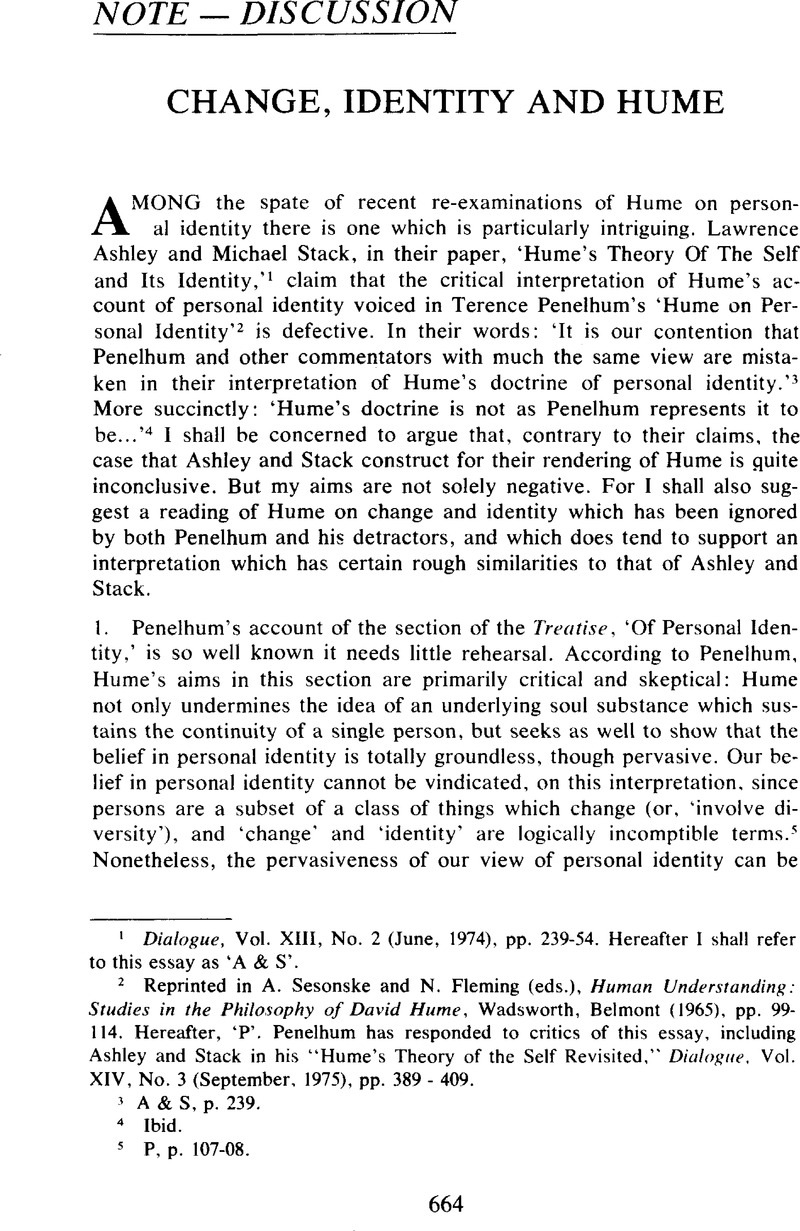Published online by Cambridge University Press: 05 May 2010

1 Dialogue, Vol. XIII, No. 2 (June, 1974), pp. 239–54.Google Scholar Hereafter I shall refer to this essay as 'A & S'.
2 Reprinted in A. Sesonske, N. Fleming (eds.), Human Understanding: Studies in the Philosophy of David Hume, Wadsworth, Belmont (1965), pp. 99–114. Hereafter, 'P'. Penelhum has responded to critics of this essay, including Ashley, and Stack, in his “Hume's Theory of the Self Revisited.” Dialogue, Vol. XIV, No. 3 (September, 1975), pp. 389–409Google Scholar.
3 A & S, p. 239.
4 Ibid.
5 P, p. 107–08.
6 P, p. 101
7 P, p. 106 and p. 110.
8 A & S, p. 240.
9 A & S, pp. 244–5 and p. 253.
10 A Treatise of Human Nature, Selby-Bigge, L. A. (ed.), Oxford University Press, Oxford (1888; reprinted 1965), p. 261.Google Scholar Hereafter I shall refer to the Treatise as 'T'
11 T, p. 259.
12 A & S., p. 244; T, p.256.
13 A & S, pp. 240–4.
14 A & S, p. 245.
15 A & S, pp. 239.
16 A & S, pp. 249.
17 ibid.
18 T. p. 253.
19 A & S, p. 244 and T, p. 256. The bracketed portion has been inserted by Ashley and Stack.
20 A & S., pp. 244–5.
21 T, p. 256.
22 “Hume and 'Imperfect Identity'”, Philosophical Quarterly, Vol. 7 (1957). pp. 340–52CrossRefGoogle Scholar.
23 Ibid., p. 343.
24 A & S, p. 254.
25 Precisely the same argument for establishing the falsity of A will show as well the flaw in von Leyden's case (op. cit.) for claiming that Hume could not have intended to use the expression 'imperfect identity'.
26 T, p. 74.
27 A & S, p. 240.
28 This paper was written while assisted as a research fellow to the Canada Council. I am grateful to the referee for Dialogue for several helpful comments.